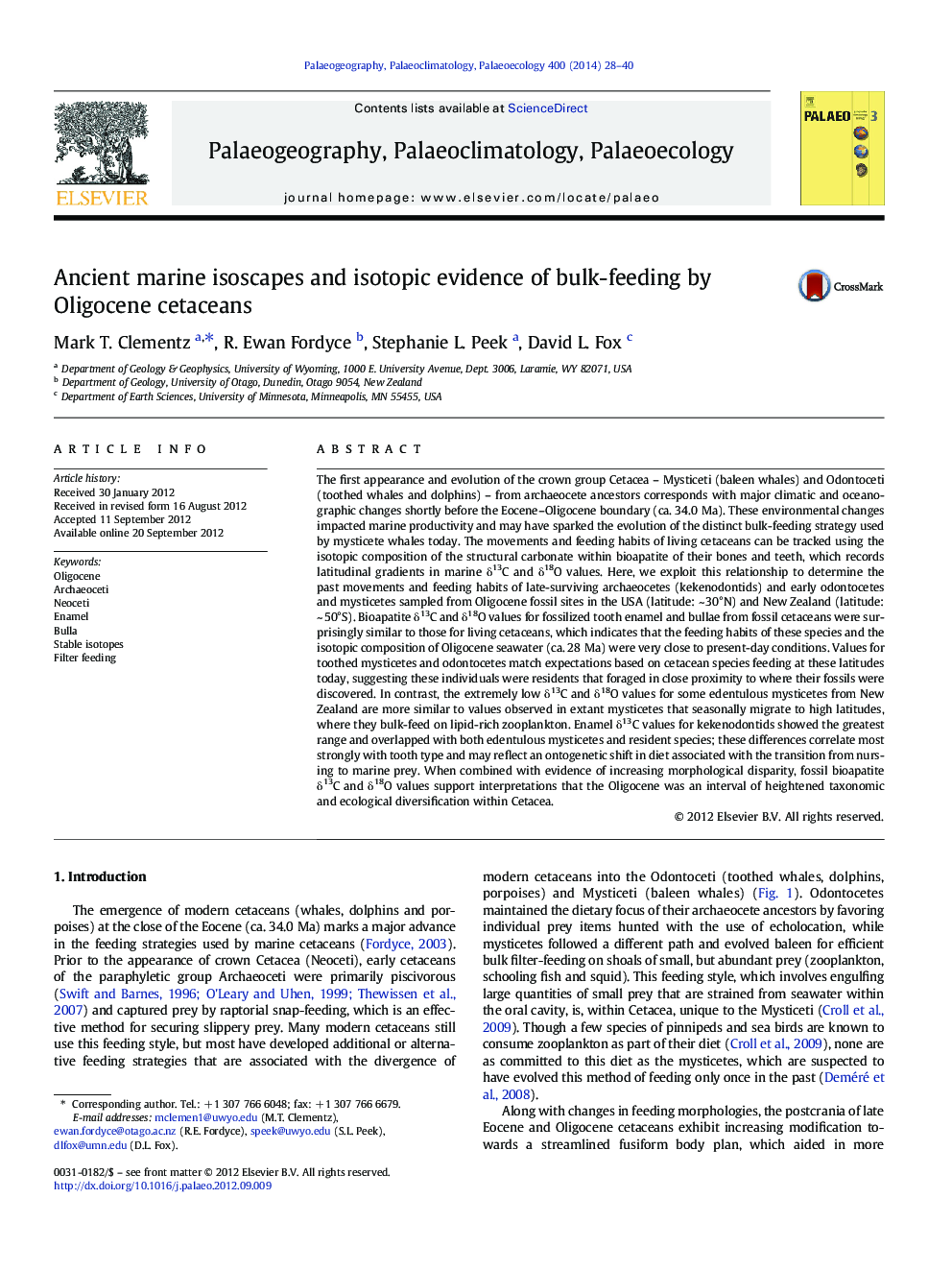| کد مقاله | کد نشریه | سال انتشار | مقاله انگلیسی | نسخه تمام متن |
|---|---|---|---|---|
| 4466252 | 1622190 | 2014 | 13 صفحه PDF | دانلود رایگان |

The first appearance and evolution of the crown group Cetacea – Mysticeti (baleen whales) and Odontoceti (toothed whales and dolphins) – from archaeocete ancestors corresponds with major climatic and oceanographic changes shortly before the Eocene–Oligocene boundary (ca. 34.0 Ma). These environmental changes impacted marine productivity and may have sparked the evolution of the distinct bulk-feeding strategy used by mysticete whales today. The movements and feeding habits of living cetaceans can be tracked using the isotopic composition of the structural carbonate within bioapatite of their bones and teeth, which records latitudinal gradients in marine δ13C and δ18O values. Here, we exploit this relationship to determine the past movements and feeding habits of late-surviving archaeocetes (kekenodontids) and early odontocetes and mysticetes sampled from Oligocene fossil sites in the USA (latitude: ~ 30°N) and New Zealand (latitude: ~ 50°S). Bioapatite δ13C and δ18O values for fossilized tooth enamel and bullae from fossil cetaceans were surprisingly similar to those for living cetaceans, which indicates that the feeding habits of these species and the isotopic composition of Oligocene seawater (ca. 28 Ma) were very close to present-day conditions. Values for toothed mysticetes and odontocetes match expectations based on cetacean species feeding at these latitudes today, suggesting these individuals were residents that foraged in close proximity to where their fossils were discovered. In contrast, the extremely low δ13C and δ18O values for some edentulous mysticetes from New Zealand are more similar to values observed in extant mysticetes that seasonally migrate to high latitudes, where they bulk-feed on lipid-rich zooplankton. Enamel δ13C values for kekenodontids showed the greatest range and overlapped with both edentulous mysticetes and resident species; these differences correlate most strongly with tooth type and may reflect an ontogenetic shift in diet associated with the transition from nursing to marine prey. When combined with evidence of increasing morphological disparity, fossil bioapatite δ13C and δ18O values support interpretations that the Oligocene was an interval of heightened taxonomic and ecological diversification within Cetacea.
► Trophic level and habitat information are recorded in bioapatite δ13C and δ18O values.
► The Oligocene marks a significant diversification in cetacean feeding ecology.
► Kekenodontidae may have competed with early mysticetes for lower trophic level prey.
Journal: Palaeogeography, Palaeoclimatology, Palaeoecology - Volume 400, 15 April 2014, Pages 28–40